Your sports watch can now authenticate payments using your unique heart rate patterns, eliminating the need for PINs or passwords. Heart rate variability creates biometric signatures as distinctive as fingerprints, while ECG sensors analyze your pulse in real-time for secure transaction verification. This technology processes payments in under two seconds through continuous monitoring, with machine learning adapting to your natural rhythm variations. The biometric payment market’s projected to reach $5.8 trillion by 2026, though privacy concerns and accuracy rates across different brands continue shaping this revolutionary payment landscape.
Heart Rate Authentication: The New Security Standard
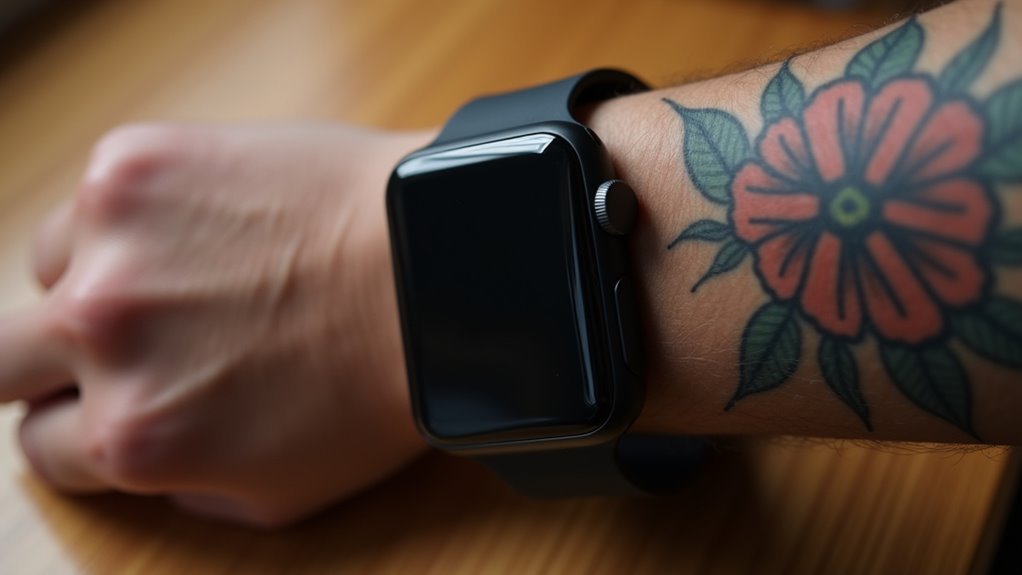
As wearable technology evolves beyond simple fitness tracking, your sport watch is becoming a sophisticated security device that recognizes you through your unique heart rate patterns. This biometric authentication method transforms your heartbeat into a personal security key that’s virtually impossible to replicate or forge.
Your heart rate variability creates a distinctive pattern that’s as unique as your fingerprint. When you’re making payments, your watch continuously monitors these patterns through specialized sensors, providing seamless authentication without requiring passwords or physical contact. This frictionless experience enhances security while maintaining convenience.
The technology combines with other biometric factors for multi-factor authentication, creating robust protection for your financial transactions. Heart rate biometrics utilize encryption and tokenization to safeguard your identity and account information during payment processing.
As biometric payments approach $5.8 trillion by 2026, your heartbeat represents the future of secure, effortless digital transactions.
Pulse-Based Payment Technology Architecture
Behind every heartbeat-powered payment lies a sophisticated architecture that transforms your pulse into secure transaction data. Your sport watch leverages microservices architecture to process biometric information efficiently, while real-time analytics monitor each transaction for fraud protection.
The technical foundation includes three critical components:
- Tokenization Services – Your pulse data converts into secure tokens, protecting your actual biometric information during transactions.
- API Integration – Unified APIs connect your watch to payment networks like PULSE, enabling seamless processing across different systems.
- Contactless Communication – Near-field communication protocols transmit your authenticated pulse signature to payment terminals instantly. The system provides real-time validation for every transaction, ensuring immediate confirmation of payment authorization.
This architecture guarantees your heartbeat becomes a reliable payment method while maintaining the security and scalability needed for widespread adoption across millions of users.
Sports Watch Biometric Sensors and Payment Integration
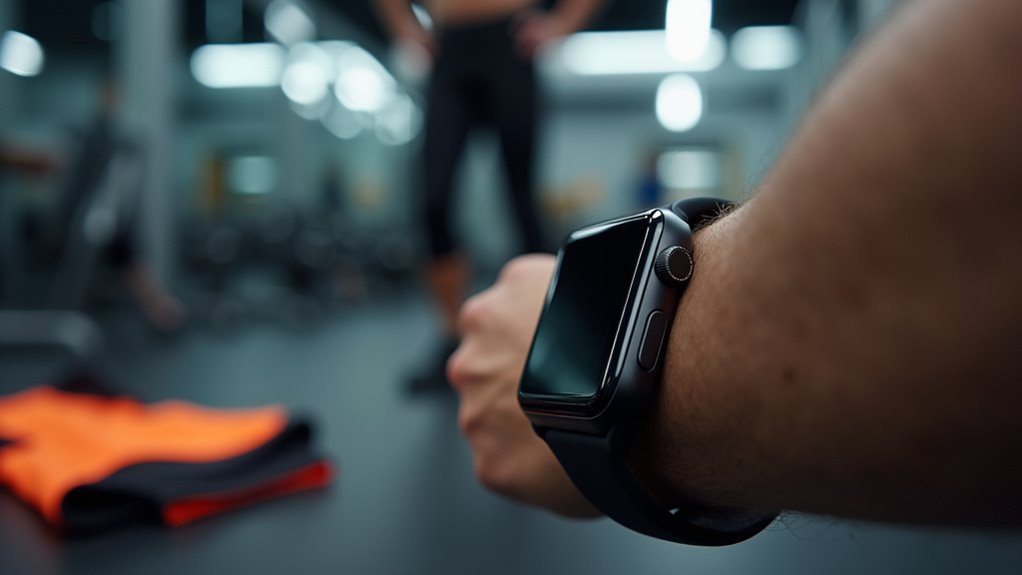
Sports watches now pack multiple biometric sensors that work together to create seamless payment experiences.
You’ll find fingerprint scanners embedded directly into your watch face, eliminating the need for PINs during transactions. Your heartbeat pattern serves as a unique identifier, continuously monitored through existing health sensors to authenticate payments automatically.
These ultra-thin sensor modules don’t compromise your watch’s sleek design while adding robust security layers. You can complete transactions with simple wrist flicks using NFC technology, which consumes virtually no battery power.
Your biometric data stays protected in secure hardware modules, preventing unauthorized access. Advanced devices support cryptographic standards including RSA, ECC, AES, and Triple-DES for maximum security protection.
The same sensors tracking your fitness metrics now double as payment authenticators, making your sports watch an all-encompassing device that handles both health monitoring and financial transactions effortlessly.
Real-Time Health Monitoring Meets Transaction Security
Your sport watch can now use your heartbeat as a living password, turning your pulse into the ultimate security key for contactless payments.
When you’re ready to buy that post-workout smoothie, the device reads your unique heart rate pattern to verify it’s really you making the transaction.
This biometric authentication technology transforms your cardiovascular data into a fortress protecting your financial information, making payment fraud nearly impossible since no one else shares your exact pulse signature. However, this personal health data creates significant privacy concerns as sensitive cardiovascular information becomes part of financial transactions.
Biometric Authentication Technology
While traditional passwords and PINs create friction in the user experience, modern sport watches eliminate these barriers by integrating sophisticated biometric sensors that authenticate your identity through unique physiological traits.
Your device combines multiple biometric methods to guarantee secure transactions without compromising convenience.
These advanced authentication systems offer three key advantages:
- Multi-sensor verification – Your watch uses fingerprint scanners, ECG readings, and heartbeat recognition simultaneously.
- Fraud resistance – Physiological traits can’t be replicated or counterfeited like traditional credentials.
- Seamless integration – Authentication happens automatically while you’re wearing the device.
Your biometric data stays secure through on-device processing and hardware encryption, eliminating cloud vulnerabilities. Professional e-Sports competitors are already leveraging these biometric capabilities to stream real-time physiological data during competitions.
This layered approach combines behavioral patterns with physiological monitoring, creating dynamic security that adapts to your unique habits.
Heart Rate Payment Verification
Beyond these established biometric methods, your sport watch can now authenticate payments using your heart’s unique electrical signature in real-time. ECG signals extract distinctive features from your heartbeat patterns, creating an incredibly secure verification system that’s nearly impossible to replicate.
| Traditional Methods | Heart Rate Verification |
|---|---|
| Fingerprint scanning | ECG signal analysis |
| PIN entry vulnerabilities | Unique physiological patterns |
| Static authentication | Real-time monitoring |
Your wearable device processes this data through high-speed algorithms, enabling instant transaction approval while you’re exercising or going about your daily routine. Machine learning integration personalizes the authentication process, adapting to your heart’s natural variations. This technology offers superior security compared to fingerprints since your heart rhythm can’t be easily stolen or duplicated, revolutionizing how you’ll make payments during active lifestyles. The verification process can complete identification within fifty heartbeats, making it practical for everyday use.
Pulse-Based Transaction Security
As smartwatches continuously monitor your pulse throughout the day, this constant stream of biometric data creates an unprecedented opportunity for transaction security that adapts to your body’s real-time state.
Your heart rate becomes a living authentication key that’s nearly impossible to replicate.
Neural network-based systems analyze your pulse patterns alongside transaction data, creating sophisticated risk scores that detect anomalies instantly. These systems facilitate connections between users and security experts who can provide additional validation when unusual patterns emerge, creating a collaborative security network that combines automated detection with human expertise.
When someone attempts to use your payment method, the system compares their biometric signature against your established patterns.
This pulse-based security offers three key advantages:
- Continuous verification – Your heart rate validates transactions without requiring separate authentication steps
- Spoofing resistance – Live health readings minimize fraud risk compared to static passwords
- Contextual awareness – Security adapts based on your current activity and health metrics
Fitness Tracker Payment Accuracy and Performance Metrics
You’ll find that wrist-based payment systems process transactions faster than traditional phone-based methods, thanks to dedicated NFC chips and secure element hardware that streamline authentication.
Your device’s accuracy rates vary considerably depending on the brand and model you’re using—Apple Watch and Fitbit consistently deliver the most reliable performance metrics across both payment processing and fitness tracking. With 360.06 million fitness tracker users worldwide in 2023, these devices have established themselves as reliable platforms for integrated payment and health monitoring capabilities.
When you’re evaluating these systems, consider that transaction speed depends heavily on real-time biometric validation, which requires robust sensor algorithms to maintain both security and user experience.
Transaction Speed Analysis
Most fitness tracker payment systems deliver transaction processing times under two seconds, setting the benchmark for seamless wearable commerce experiences.
You’ll notice this speed becomes critical in reducing queue times at retail locations and fitness environments where quick transactions matter most.
Your watch’s payment speed depends on several key factors:
- API integration quality – How well your device communicates with banks and payment networks
- Network connectivity – Signal strength directly impacts your contactless payment response times
- Device hardware efficiency – Your tracker’s processor speed and secure element performance
Real-time monitoring dashboards track your transaction volumes and detect processing delays immediately.
When you’re making payments during peak hours or in crowded signal environments, these systems guarantee you’ll maintain swift payment flows without experiencing frustrating delays that could disrupt your workout routine. The enhanced security comes from tokenization technology that protects your actual payment data during every wearable transaction.
Accuracy Rate Benchmarks
While fitness trackers excel at rapid payment processing, their underlying biometric accuracy directly impacts payment system reliability and user confidence. Your device’s heart rate measurements vary considerably between brands – Garmin achieves impressive 1.16-1.39% error rates, while Samsung underestimates by 7.1 beats per minute during exercise. This accuracy matters when your pulse becomes your payment authentication.
| Brand | Heart Rate Error | Step Count Error |
|---|---|---|
| Garmin | 1.16-1.39% | Up to 23.7% |
| Samsung | -7.1 BPM | 1.08-6.30% |
| Apple | N/A | 18% |
You’ll find heart rate variability underreported by 18-22ms across popular brands, affecting detailed biometric analyses. While step counting shows wider variations, Samsung demonstrates more consistent performance. Recent studies involving over 1.2 million participants demonstrate that wearables show promising diagnostic capabilities for specific medical conditions, which could enhance payment authentication systems. These accuracy benchmarks directly influence your payment system’s dependability when biometric data serves as authentication.
Biometric Data Privacy in Athletic Wearable Payments
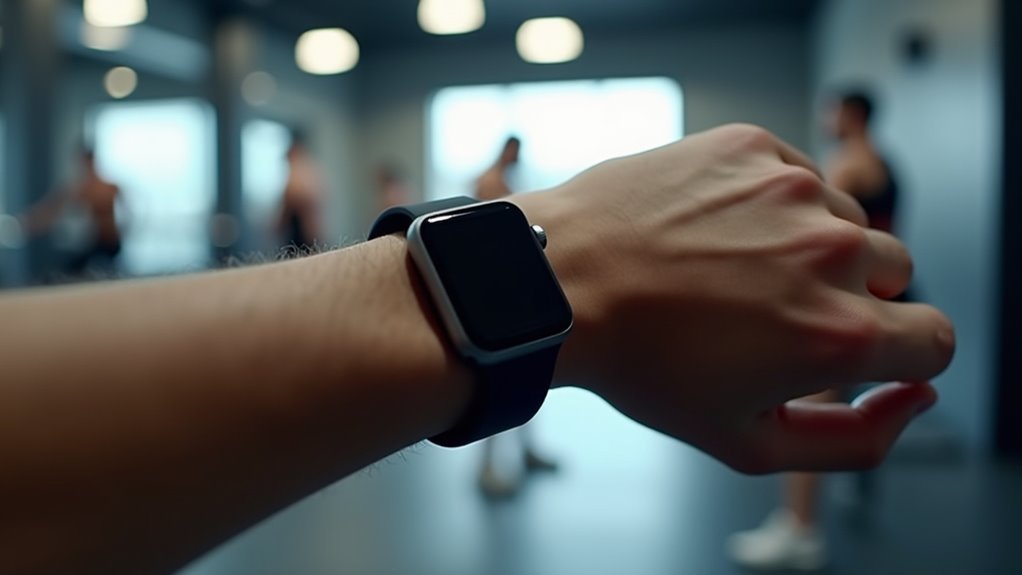
As sport watches evolve into sophisticated payment devices, your biometric data becomes a valuable commodity that’s fought over by teams, leagues, and technology companies.
When you tap your watch to buy post-game refreshments, you’re not just making a transaction—you’re contributing to a complex data ecosystem where ownership remains contested.
Your payment-enabled sport watch creates three critical privacy challenges:
- Data exploitation risks – Third parties like gambling operators and sponsors can profit from your physiological metrics.
- Consent transparency gaps – You often don’t understand how your payment and biometric data gets shared or stored.
- Unauthorized access vulnerabilities – Data breaches threaten both your financial security and personal health information.
Professional athletes gain some protection through collective bargaining, but amateur athletes have limited control over their valuable biometric data. States like Washington and Texas have enacted their own biometric privacy laws to provide additional protections for individuals.
Market Adoption Trends for Pulse-Activated Transactions
Though pulse-activated transactions remain experimental, the payment landscape is rapidly shifting toward biometric authentication that could make your heartbeat the next payment method.
You’re witnessing unprecedented growth in digital payments, with global revenue projected to exceed $3 trillion by 2028. Digital wallets already capture over 20% of online payments, while instant payments are expected to reach 20% of global transactions by 2028.
Your smartwatch’s advanced biometric capabilities position it perfectly for this evolution.
With over 560 million users adopting cryptocurrency in 2024 and AI-driven payment solutions enhancing security, you’re seeing broader acceptance of innovative payment methods. AI-driven fraud detection models now prevent nearly USD 30 billion in fraud annually, demonstrating the robust security infrastructure supporting next-generation payment technologies.
The Asia-Pacific region’s dominance, contributing nearly 50% to global payments by 2028, suggests pulse-activated transactions could gain significant traction in tech-forward markets first.
Frequently Asked Questions
What Happens if My Heart Rate Is Irregular During Payment?
Your irregular heart rate can cause payment authentication to fail since the system can’t detect a consistent pulse pattern. You’ll need to use backup methods like PIN entry or try again when your rhythm stabilizes.
Can I Use Pulse Payments if I Have a Pacemaker?
You can likely use pulse payments with a pacemaker since sport watches use optical sensors and low-energy NFC technology. However, you should consult your cardiologist first and wear the watch on your opposite wrist.
How Much Do Pulse-Activated Sports Watches Typically Cost?
You’ll find pulse-activated sports watches range from $200-$300 for budget models, $300-$500 for mid-range options, and $500-$800+ for premium features. Popular choices include Coros Pace 3 and Apple Watch Ultra 2.
Which Retailers Currently Accept Pulse-Based Payments From Sports Watches?
You’ll find major retailers like Apple Stores, Walmart, Target, McDonald’s, and Starbucks accept contactless watch payments, but true pulse-based authentication isn’t widely implemented yet—most use standard NFC technology instead.
Do Pulse Payments Work During Intense Workouts When Heart Rate Spikes?
You’ll likely face authentication issues during intense workouts. High heart rates, sweat, and movement create signal disruptions that reduce pulse detection accuracy, making payments less reliable compared to resting conditions.
In Summary
You’re witnessing a payment revolution that’s literally at your fingertips—or rather, your wrist. Your pulse isn’t just tracking your workout anymore; it’s becoming your digital wallet’s key. You’ll find this technology reshaping how you think about both fitness and finance. As biometric authentication becomes mainstream, you’re moving toward a future where your heartbeat confirms your identity and completes your purchases seamlessly during any activity.

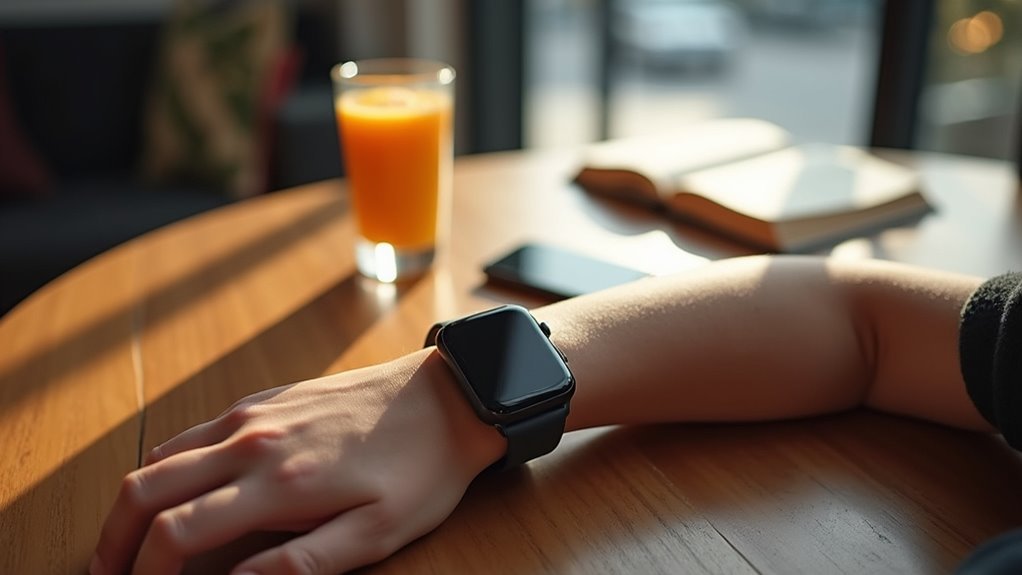

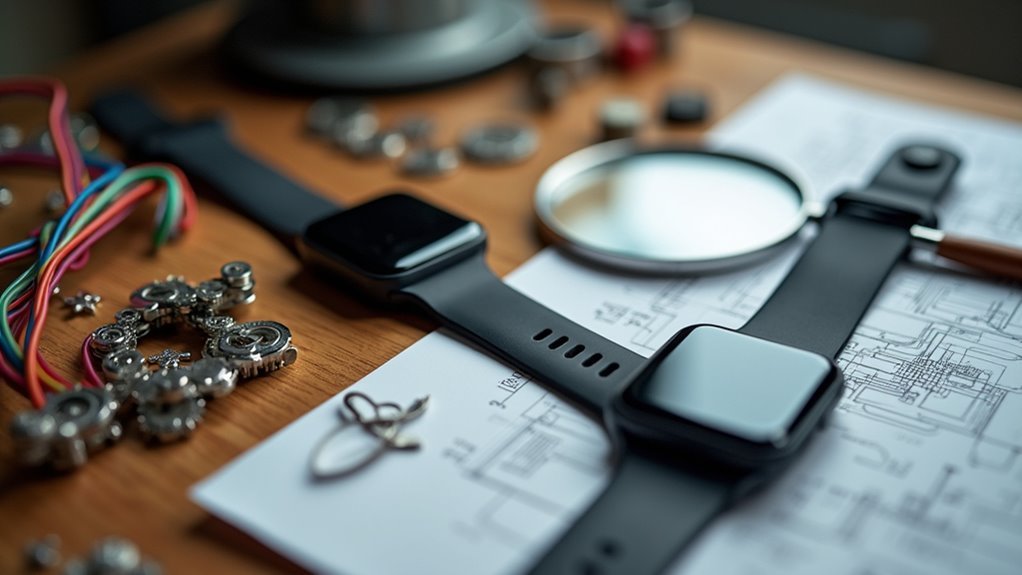
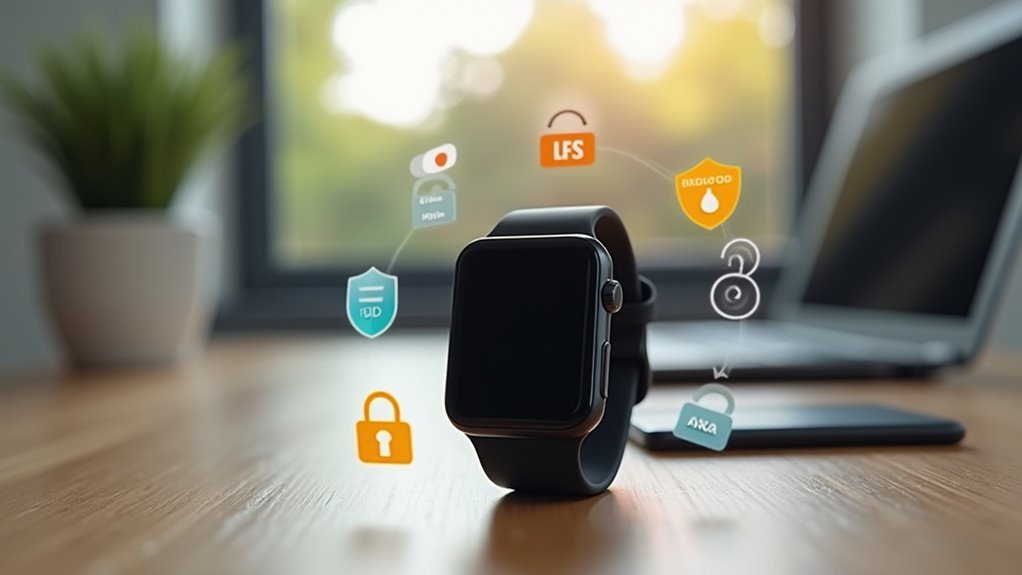
Leave a Reply